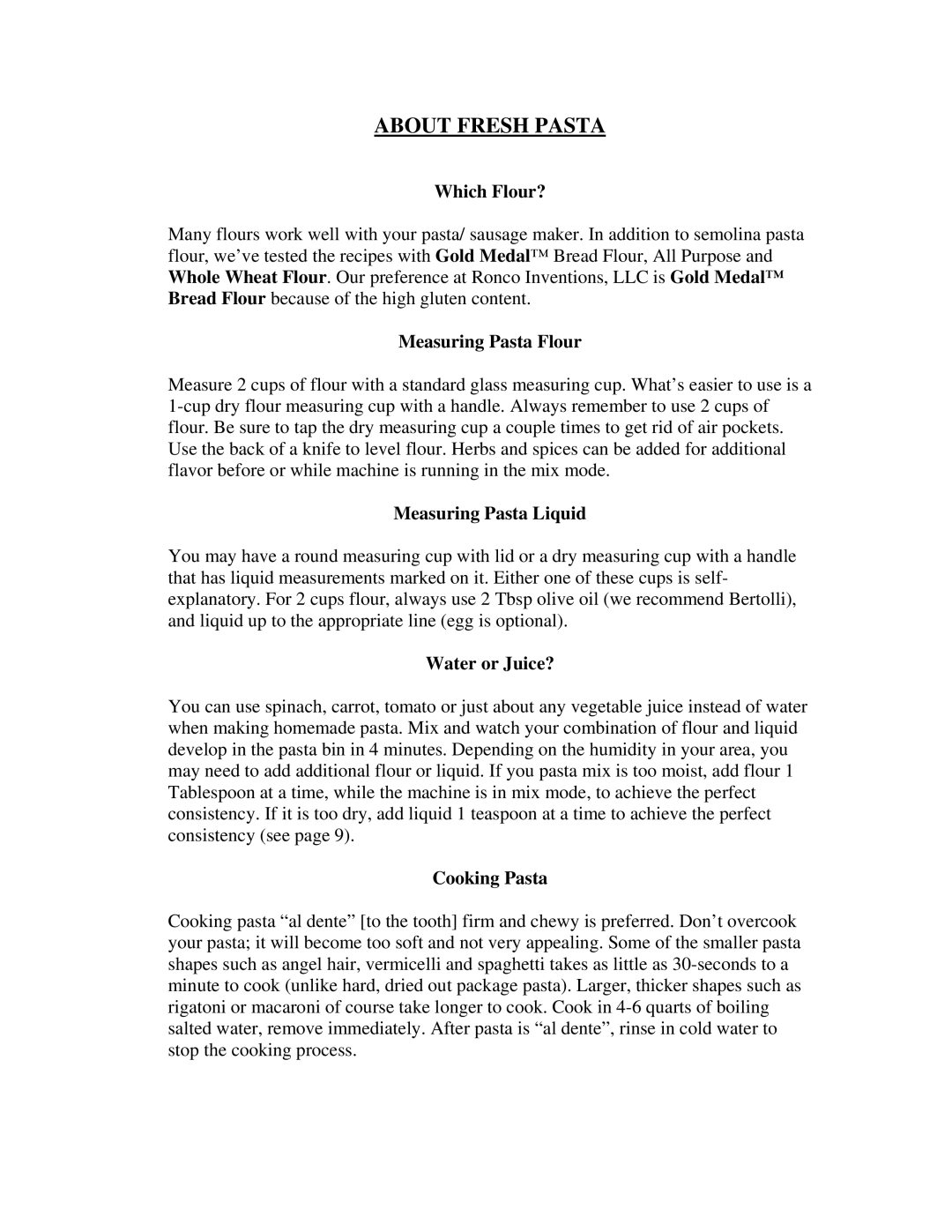Pasta Maker specifications
The Ronco Pasta Maker is an innovative kitchen appliance that transforms the art of pasta making into a simple and enjoyable process. With its clever design and user-friendly features, this machine is perfect for both novice cooks and seasoned chefs who wish to create fresh, homemade pasta.One of the standout characteristics of the Ronco Pasta Maker is its ability to prepare a variety of pasta types, including spaghetti, fettuccine, and angel hair. The device comes equipped with interchangeable pasta molds, allowing users to experiment with different shapes and sizes. This versatility encourages creativity in the kitchen and opens up a world of culinary possibilities.
At the heart of the Ronco Pasta Maker is its advanced mixing technology. The machine seamlessly combines flour and water to create the perfect pasta dough, ensuring an even texture and consistent results every time. The powerful motor helps to knead the dough efficiently, reducing the time and effort traditionally required for pasta making. Additionally, the intelligent design minimizes the need for manual intervention, making it accessible for anyone to use.
Another notable feature is the stainless steel construction of the Ronco Pasta Maker, ensuring durability and long-term performance. The sleek design also adds a touch of elegance to any kitchen countertop. Furthermore, the machine is easy to clean, with components that can be easily removed and washed, making post-cooking cleanup a breeze.
The Ronco Pasta Maker also includes an integrated digital timer, enabling users to track their pasta-making process accurately. This feature helps ensure that pasta is cooked to perfection, eliminating the guesswork typically associated with traditional methods. For those who enjoy customization, the machine offers adjustable thickness settings for the dough, allowing users to tailor the texture of their pasta to their liking.
In conclusion, the Ronco Pasta Maker stands out as a must-have kitchen appliance for pasta enthusiasts. With its robust features, innovative technologies, and ease of use, it simplifies the process of creating fresh pasta from scratch. Whether for a family dinner or a special occasion, this machine empowers users to enjoy the authentic taste and texture of homemade Italian pasta effortlessly.
